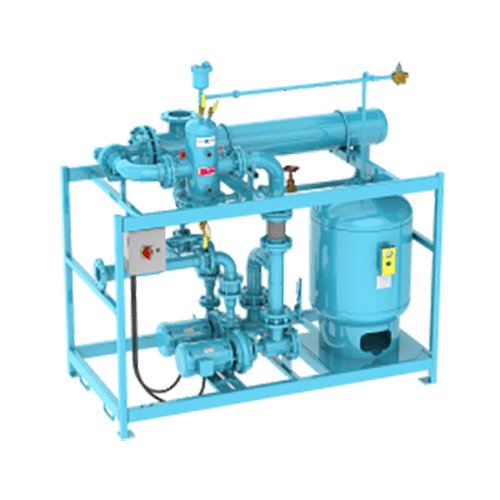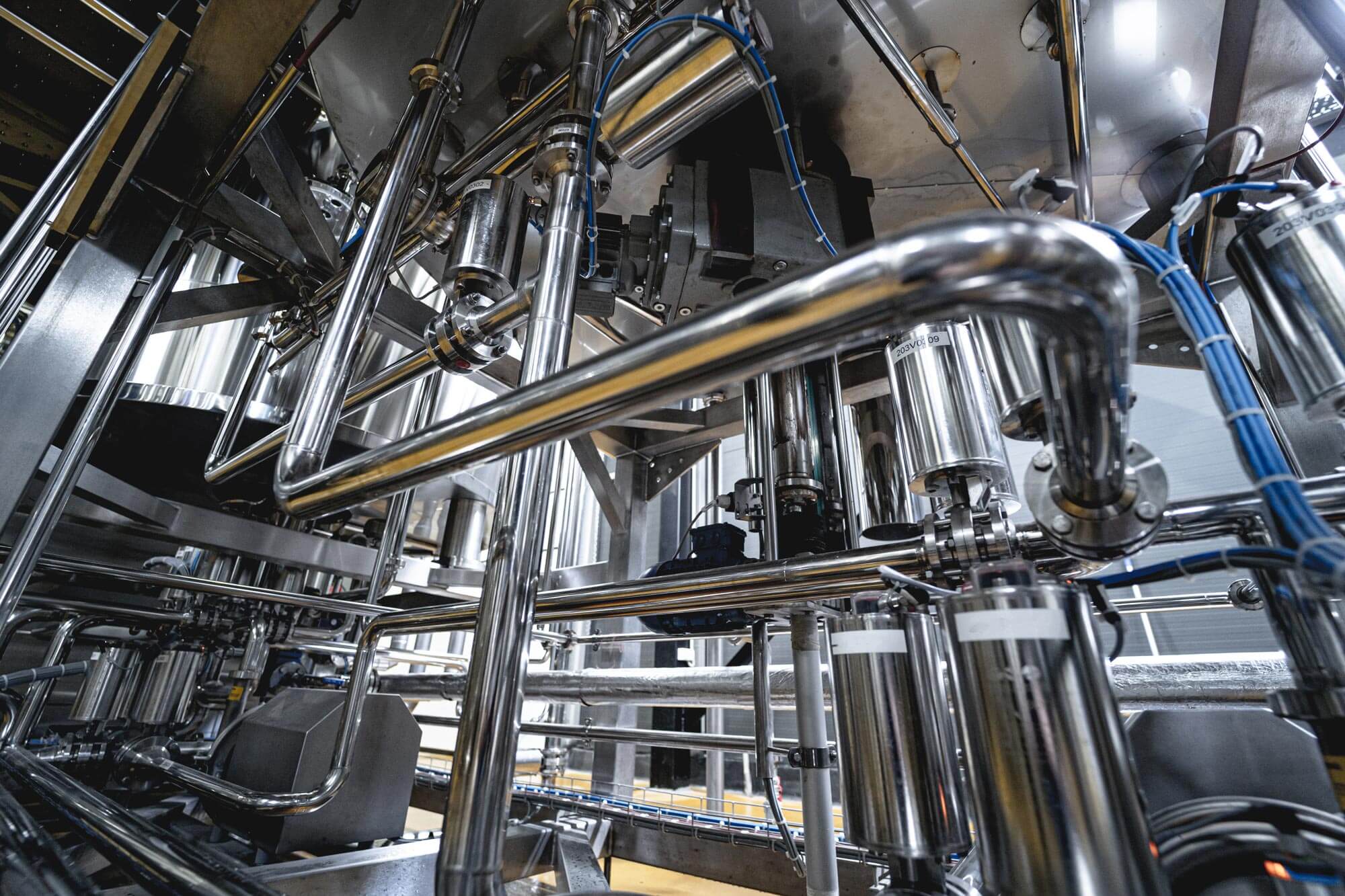A Comprehensive Overview to Picking the Right Heat Transfer Systems for Your Requirements
Selecting the ideal Heat transfer system is necessary for functional performance. Various systems deal with various requirements, influenced by aspects such as temperature level variety and liquid kind. Understanding the principles behind Heat transfer, such as transmission, convection, and radiation, is crucial. Additionally, examining energy resources and maintenance practices can impact lasting performance. A closer evaluation of these factors to consider discloses exactly how to tailor a system to specific needs. What should one prioritize in this complex decision-making procedure?
Comprehending Heat Transfer: Trick Ideas and Principles
Although Heat transfer might look like a simple idea, it encompasses a variety of concepts that are essential for efficient system design. Comprehending these principles is necessary for engineers and developers that intend to enhance thermal performance in various applications. Conduction, for instance, entails the transfer of Heat through solid materials, while convection refers to the activity of Heat within liquids. Radiation, an additional essential concept, describes just how Heat can be transferred through electro-magnetic waves. Each of these mechanisms plays an important duty in identifying just how energy moves within a system. By extensively comprehending these ideas, experts can make enlightened choices, guaranteeing that Heat transfer systems run successfully and meet the certain needs of their applications
Kinds of Heat Transfer Equipments: An Overview
Comprehending the concepts of Heat transfer lays the foundation for checking out the numerous kinds of Heat transfer systems offered. Heat transfer systems can be categorized mostly into three kinds: transmission, convection, and radiation. Transmission involves Heat transfer via strong products, counting on straight get in touch with between bits. Convection, on the various other hand, takes place in fluids (gases and fluids) where the movement of the fluid itself assists in Heat transfer. Radiation entails the transfer of Heat through electromagnetic waves and does not need a tool, enabling it to take place in a vacuum. Each sort of system has unique characteristics and applications, making it crucial for individuals and companies to very carefully assess their certain requirements when selecting the most suitable Heat transfer option.
Applications of Heat Transfer Solutions in Various Industries
Heat transfer systems play a vital role throughout various markets, influencing performance and item top quality. In commercial production processes, they help with exact temperature control, while in food and drink processing, they guarantee safety and security and preservation. Furthermore, a/c and climate control systems count greatly on efficient Heat transfer to preserve comfortable environments.
Industrial Production Processes

Various commercial production procedures rely greatly on efficient Heat transfer systems to maximize efficiency and boost item high quality. In markets such as metalworking, Heat exchangers play an important function in keeping optimal temperature levels throughout welding, spreading, and creating. These systems assure uniform Heat circulation, which is essential for attaining desired material properties. In the chemical production sector, Heat transfer systems promote exact temperature level control during reactions, influencing return and safety and security. In textile manufacturing, efficient Heat administration is important for dyeing and ending up procedures, affecting shade uniformity and textile top quality. By selecting ideal Heat transfer modern technologies, suppliers can boost energy efficiency and decrease operational costs, eventually bring about a much more lasting and competitive production atmosphere.
Food and Beverage Processing
Reliable Heat transfer systems are similarly crucial in the food and beverage processing market, where maintaining excellent temperature levels is critical for food safety and security and top quality. These systems play an important duty in processes such as food preparation, sterilization, and pasteurization, making sure that products are safe for consumption and keep their nutritional worth. Heat exchangers, for example, effectively transfer Heat in between liquids, enhancing energy use while reducing temperature level changes. Additionally, refrigeration systems are essential for maintaining subject to spoiling items and extending service life. The choice of Heat transfer technology straight influences operational performance and product integrity, making it crucial for food and drink makers to select the ideal systems tailored to their details handling requirements. This mindful choice ultimately adds to consumer satisfaction and food security.

HVAC and Environment Control
While numerous industries rely upon Heat transfer systems for efficiency, COOLING AND HEATING (Home Heating, Ventilation, and Cooling) plays a vital function in preserving indoor climate control throughout different setups. These systems utilize Heat transfer concepts to control moisture, temperature level, and air high quality, making sure comfort and safety in residential, industrial, and commercial environments. Appropriately designed HVAC systems boost power performance, lower operational expenses, and minimize environmental effect. In business structures, for instance, effective climate control contributes to staff member efficiency and consumer complete satisfaction. In commercial applications, a/c systems assist preserve excellent problems for devices operation and item conservation. Picking the appropriate Heat transfer system is essential for conference certain environment control needs and achieving general system efficiency.
Reviewing Energy Resources for Heat Transfer Equipments
In evaluating power resources for Heat transfer systems, a comparison of renewable power options and fossil gas factors to consider is vital. Renewable resources, such as solar and wind, deal sustainable options that can minimize ecological effect. Conversely, nonrenewable fuel Continued sources stay prevalent due to their well established facilities and energy thickness, motivating a cautious evaluation of both options.
Renewable Resource Options

Fossil Gas Factors To Consider
Reviewing fossil fuel look at this website considerations is vital for the effectiveness and sustainability of Heat transfer systems. Fossil gas, such as all-natural gas, oil, and coal, are typical energy sources that provide substantial Heat result, making them popular selections for household and commercial applications. Nevertheless, their environmental effect, consisting of greenhouse gas emissions and resource exhaustion, elevates problems. When selecting a warmth transfer system, it is crucial to assess the accessibility, price, and regulative elements related to these fuels. In addition, the performance of nonrenewable fuel source systems should be considered, as greater effectiveness can mitigate some ecological drawbacks. Inevitably, a well balanced strategy weighing efficiency and sustainability can direct decision-makers toward the most suitable Heat transfer solution for their certain needs.
Aspects to Consider When Selecting a Warm Transfer System
Selecting an ideal Heat transfer system calls for cautious factor to consider of various variables that can significantly influence effectiveness and efficiency. One important variable is the operating temperature level variety, which determines the materials and layout appropriate for the application. Furthermore, the sort of liquid used in the system-- whether gas or fluid-- influences Heat transfer performance and compatibility. The system's dimension and capacity must straighten with the particular demands of the operation to stay clear of inefficiencies. Power resource availability is likewise vital, affecting operating costs and sustainability. Furthermore, the installation setting, consisting of area constraints and ease of access for upkeep, plays a considerable role in system choice. Ultimately, regulatory compliance and safety and security standards should be thought about to ensure the system meets all lawful requirements.
Maintenance and Performance Optimization for Heat Transfer Systems
Keeping Heat transfer systems is crucial for ensuring optimal efficiency and durability. Normal upkeep activities, such as cleaning Heat exchangers and evaluating insulation, help avoid effectiveness losses due to fouling and thermal linking. Additionally, keeping track of system parameters, including stress and temperature level, enables early detection of anomalies, minimizing downtime and expensive repair work. Carrying out a preventative maintenance timetable can maximize efficiency and prolong the lifespan of parts. Moreover, updating to innovative control systems can boost functional effectiveness by adapting to varying problems and tons. By prioritizing maintenance and efficiency optimization, operators can accomplish minimized power usage, reduced operational costs, and boosted general system reliability, eventually bring about far better pop over to this site resource use and an extra sustainable procedure.
Future Patterns in Heat Transfer Technologies
As industries significantly focus on sustainability and energy efficiency, future fads in Heat transfer innovations are readied to undertake significant changes. Advancements such as advanced products, including carbon nanotubes and nanofluids, promise enhanced thermal conductivity and effectiveness. Additionally, the integration of eco-friendly power sources into Heat transfer systems is obtaining momentum, promoting environmentally friendly remedies. Smart modern technologies, consisting of IoT sensing units, are anticipated to transform tracking and control, allowing real-time data evaluation for maximized performance. Moreover, the growth of compact and modular systems will certainly facilitate simpler installment and upkeep, accommodating diverse applications. These developments show a change towards more sustainable, reliable, and versatile Heat transfer services, aligning with international power goals and environmental standards.
Frequently Asked Concerns
What Are the Ecological Influences of Heat Transfer Solutions?
The environmental influences of Heat transfer systems can consist of greenhouse gas discharges, energy consumption, and prospective thermal air pollution. Additionally, improper disposal of ineffectiveness and materials can contribute to resource deficiency and ecosystem disruption.
Just how Do I Determine the Cost-Effectiveness of a Warm Transfer System?
To compute the cost-effectiveness of a warmth transfer system, one need to assess preliminary costs, functional expenditures, maintenance needs, and power performance, contrasting these aspects against the anticipated life-span and efficiency of the system.
Can Heat Transfer Solution Be Used in Residential Settings?
Heat transfer systems can indeed be made use of in domestic settings. They offer effective home heating and cooling options, making homes more comfortable while potentially reducing energy prices. Their flexibility permits various applications in property environments.
What Safety And Security Rules Apply to Heat Transfer Equipments?
Security laws for Heat transfer systems commonly include guidelines on procedure, upkeep, and setup. Conformity with local building ordinance, producer requirements, and sector requirements is vital to ensure risk-free and reliable system performance in different applications.
How Do Different Materials Affect Heat Transfer Performance?

Conduction, for circumstances, entails the transfer of Heat with strong materials, while convection refers to the movement of Heat within liquids. Comprehending the principles of Heat transfer lays the foundation for checking out the various kinds of Heat transfer systems offered. Heat exchangers, for circumstances, effectively transfer Heat between liquids, enhancing energy usage while minimizing temperature level fluctuations. In assessing power sources for Heat transfer systems, a contrast of eco-friendly energy choices and fossil fuel considerations is important. Steels, such as copper and aluminum, conduct Heat efficiently, whereas insulators like rubber and glass reduce down Heat flow.